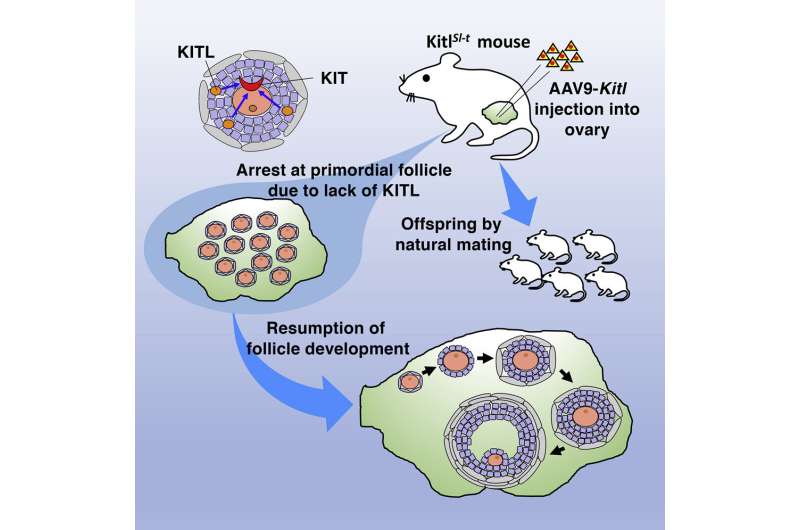May 3, 2022 report
Restoring fertility in mice with damaged signaling between granulosa and oocytes using adeno-associated viruses

A team of researchers with several members affiliated with Kyoto University and one with Tokyo Medical and Dental University has found a way to restore fertility to mice models with granulosa communication problems. In their paper published in the journal Cell Reports Medicine, the group describes their development of a therapy to treat the ailment and the journey they took in finding a means for delivering it past the blood-follicle barrier.
Granulosa are cells in the ovaries, and their job is to nurture developing oocytes by providing hormones and nutrients. For this process to work correctly, the granulomas and oocytes must be able to communicate with one another properly. Disruptions to communication can therefore result in infertility in both humans and mice. In this new effort, the researchers genetically engineered mice to have a type of communication problem that sometimes occurs naturally and then cured the condition using a therapy delivered via an adeno-associated virus.
The communication problem arises due to a mutation to the Kitl gene—its purpose is to ensure production of a molecule that mediates communication between granulosa and an oocyte. Thus, the therapy they developed was designed to restore production of that molecule. But delivering the therapy to the site where it was needed proved to be quite tricky. As the researchers note, inside the ovaries, a barrier protects oocytes from being infected with viruses or bacteria. It is called the blood-follicle barrier, and in order for the researchers to deliver their therapy to granulosa in the ovaries, they had to find a way to get past it. After testing a host of viruses, they came upon the adeno-associated virus, AAV9, that not only was able to pass through the barrier, but it was also able to get to the granulosa and deliver the therapy.
Testing of the AAV9-delivered therapy showed it to be effective—8 out of 10 ten mice saw renewed fertility. They produced healthy offspring that grew to maturity and were infertile, proving that the therapy did not change their DNA.
More information: Mito Kanatsu-Shinohara et al, Adeno-associated-virus-mediated gene delivery to ovaries restores fertility in congenital infertile mice, Cell Reports Medicine (2022). DOI: 10.1016/j.xcrm.2022.100606
© 2022 Science X Network




















